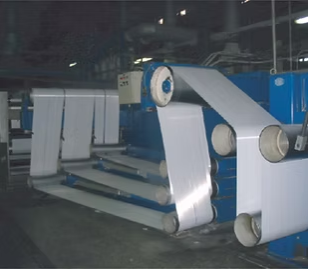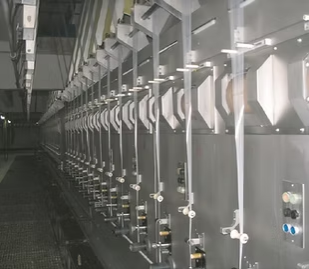What Are Macro Synthetic Fibres
- pioneerfiber
- Jun 27
- 3 min read
Updated: 7 days ago
Information Tags
• Type: 4-minute read
• Audience: Construction professionals, engineers, architects, contractors

Introduction
Concrete is one of the most widely used construction materials in the world—but it has a well-known weakness: low tensile strength. To address this, engineers and contractors have long relied on reinforcement methods such as steel rebar and welded wire fabric. However, these solutions come with limitations—including corrosion, labor-intensive installation, and surface imperfections.
Enter macro synthetic fibres, an innovative solution that delivers effective reinforcement without many of the drawbacks associated with traditional materials. In this article, we’ll explore what macro synthetic fibres are, how they work, and why they’re increasingly being adopted across the global construction industry.
What Exactly Are Macro Synthetic Fibres?
Macro synthetic fibres are engineered polymer-based fibres designed to reinforce concrete at a structural level. They are typically made from high-density polyethylene (HDPE), polypropylene, or other durable polymers, and are significantly larger and stronger than microfibers.
Key characteristics include:
- Length: Usually between 35mm and 60mm (1.4–2.4 inches)
- Diameter: Thicker than microfibers, providing enhanced load transfer
- Surface texture: Designed for optimal bonding with cementitious materials
These features allow macro synthetic fibres to effectively bridge cracks, resist bending forces, and improve overall toughness in hardened concrete.
How Do Macro Synthetic Fibres Work in Concrete?
When added to the concrete mix, macro synthetic fibres become uniformly dispersed throughout the matrix. Once the concrete hardens, the fibres act as discrete reinforcement elements that:
- Arrest crack propagation at early and later stages of curing
- Improve post-crack performance under flexural and shear stress
- Enhance energy absorption during impact events
- Reduce spalling in fire-exposed applications
Unlike steel mesh or rebar—which offer localized reinforcement—**macro synthetic fibres** provide three-dimensional reinforcement throughout the entire volume of concrete.
Benefits of Using Macro Synthetic Fibres
1. Corrosion Resistance
Since they are non-metallic, macro synthetic fibres do not rust or degrade when exposed to moisture or aggressive environments—making them ideal for infrastructure projects, marine structures, and underground construction.
2. Simplified Installation
Fibres are simply added to the concrete mixer at the batching stage—eliminating the need for time-consuming placement, tying, or welding of steel mesh or rebar.
3. Improved Crack Control
By distributing stress more evenly, fibres help prevent both plastic and drying shrinkage cracks, enhancing the long-term durability of concrete structures.
4. Enhanced Impact and Abrasion Resistance
Structures reinforced with macro synthetic fibres show improved performance under dynamic loading, making them suitable for industrial flooring, airport pavements, and tunnel linings.
5. Cost Efficiency
Reduced labor requirements, lower maintenance costs, and extended service life make macro synthetic fibres a cost-effective alternative to conventional reinforcement systems.

Applications of Macro Synthetic Fibres
Due to their versatility and performance advantages, macro synthetic fibres are now used across a wide range of applications:
- Industrial Flooring: Improves abrasion resistance and reduces curling and cracking.
- Tunnel Linings: Offers excellent post-fire spalling resistance and ductility.
- Precast Elements: Enhances handling strength and impact resistance.
- Bridge Decks: Increases durability under repeated traffic loads.
- Shotcrete Applications: Provides superior cohesion and rebound reduction in sprayed concrete.
- Green Building Projects: Supports sustainability goals due to reduced material use and recyclability.
Why Choose Pioneer Fibre’s Macro Synthetic Fibres?
At Pioneer Fibre, our macro synthetic fibres are specifically engineered to deliver maximum performance in real-world conditions. Our proprietary fiber geometry ensures optimal bond strength and dispersion, while our dosage recommendations are backed by extensive field testing and third-party validation.
We also offer tailored support for architects, engineers, and contractors to ensure seamless integration into standard mix designs and project specifications.
Supporting Sustainable and Smart Construction Practices
As the construction industry moves toward more sustainable, resilient, and efficient building practices, macro synthetic fibres are playing a growing role. By reducing reliance on steel, lowering carbon footprints, and improving lifecycle performance, they align with green building standards and contribute to smarter infrastructure development.
With ongoing advancements in fiber technology, the future looks promising for even broader adoption across all types of concrete construction.
Explore PIONEER’s range of concrete reinforcement fibers and how they improve concrete properties. Visit our website: www.pioneerfibre.com
Micro fiber >> Learn More
Macro fiber >> Learn More
Steel fiber >> Learn More
Asphalt fiber >> Learn More
Contact us today to request samples, technical data, or a custom solution for your project.
Email: Sales@pioneerfibre.com | Email: Support@pioneerfibre.com
WhatsApp: +1 (929) 569-9989 | +86 151-6240-5106









